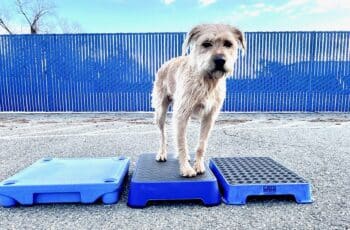Leptospirosis in Small Dogs by Nicole McCray |Published 02-09-2023.
Dog owners may have heard about Leptospirosis for their small breeds, but don’t know what it is or what it can do to their dog. It’s a disease found across the United States and affects multiple organ systems in your dog, leading it to become a severe problem if not treated accordingly.
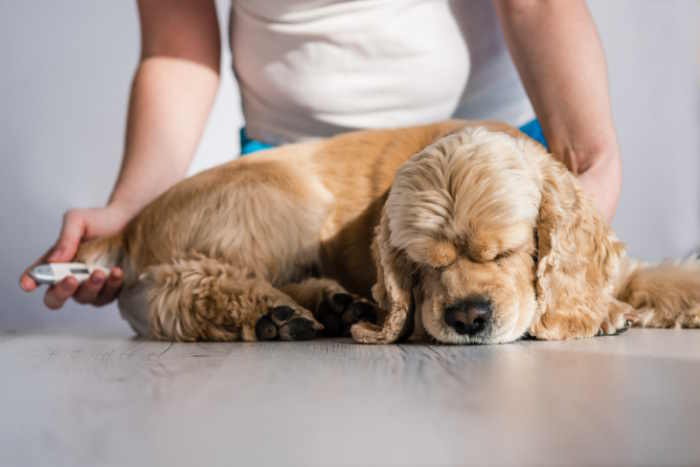 Leptospirosis in Small Dogs
Leptospirosis in Small DogsPrevention of Leptospirosis is the best way to ensure that your dog has protection. But, detecting the signs and symptoms can help you ensure your dog gets treatment immediately if it is found to have contracted it.
The more you know about diseases, signs, treatment, and prevention of illnesses that your dog could contract, gives you the benefit of knowing when you need to contact your veterinarian. It also makes it easier for you to know what to do in an emergency for your dog’s health.
Here’s all you need to know about Leptospirosis in small breed dogs so that you can assure your pet stays healthy and happy.
What is Leptospirosis?
Canine Leptospirosis is a bacterial infection caused by the Leptospira bacteria. It can affect a dog’s kidneys, liver, and other organs and can cause severe symptoms such as fever, vomiting, diarrhea, and jaundice (yellowing of the skin and whites of the eyes). In extreme cases, it can lead to kidney failure, liver failure, and even death.
Dogs can contract Leptospirosis through contact with infected urine found in standing water, damp soil, and other areas where wildlife may have urinated. Outdoor dogs and dogs that come in contact with wild animals, livestock, or other dogs are at a higher risk for infection.
The expert veterinarians and technicians from Bond Vet mention that another problem with Leptospirosis is that it’s a zoonotic disease, meaning that your dog can spread the infection to you. With humans, it causes flu-like symptoms and, more severely, kidney or liver disease.
In a case study in 2019, more than 25% of leptospirosis cases were fatal. For small dogs under fourteen pounds, the effects of Leptospirosis are much more dangerous than in larger breeds.
How Do Dogs Contract Leptospirosis?
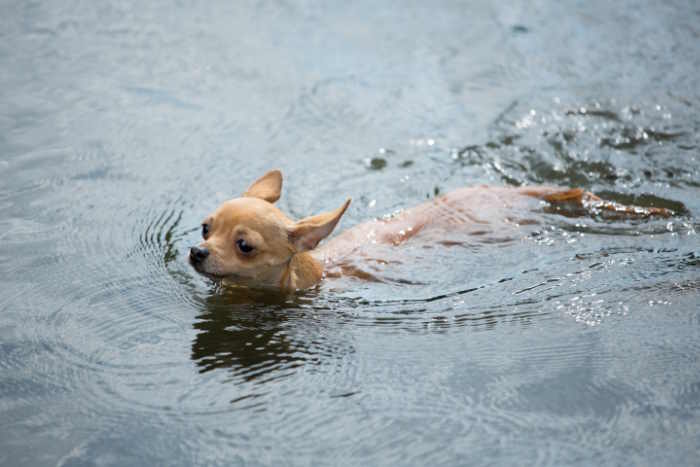
Infection from Leptospirosis seems to occur more frequently during the fall season in subtropical, tropical, and wetter environments. It’s more prevalent in places where you see marshy, muddy areas with stagnant water or have more frequent wildlife.
Dogs will contract the disease through direct contact with an infected animal. If there are any open sores on the skin, it increases the chances of getting it. The dogs that must be more careful of getting Leptospirosis to include the following:
- Hunting dogs
- Sport dogs
- Dogs living in wooded areas
- Dogs living on farms
- Dogs that spend frequent time in a kennel such as boarding or daycare
Signs and Symptoms of Leptospirosis in Small Dogs
It may be challenging to tell when your small dog gets Leptospirosis. Watch out for these signs and symptoms of an infected animal (or in your pup):
- Fever
- Sore muscles (lethargy, reluctance to move)
- Stiff muscles
- Difficulting breathing or rapid breathing
- Runny nose/nasal discharge
- Yellowing skin or whites of the eyes (Jaundice)
- Vomiting (sometimes with blood)
- Depression
- Weakness
- Diarrhea
- Red-speckles on the gums
- Frequent shivering and shaking
- Increased thirst
- Increase in urination
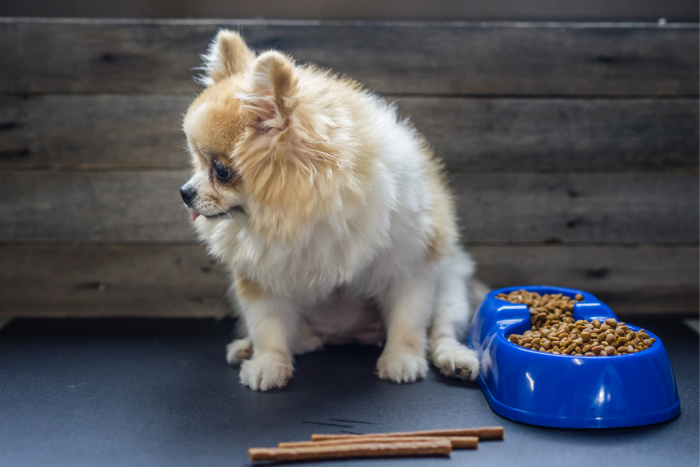
You might also notice that your dog is not eating or drinking. A lack of appetite is a strong sign that something is wrong, and you should contact your veterinarian immediately.
The diagnosis of Leptospirosis is typically made through a combination of blood tests, urine tests, and possibly kidney and liver function tests.
What Happens When My Small Dog Gets Leptospirosis?
Leptospirosis is a disease that spreads across your small dog’s body. When it enters the bloodstream, it multiplies and moves into tissues, hitting crucial organs, including the liver, kidneys, central nervous system, eyes, and reproductive organs.
The most common and quickest way to identify the disease is when your dog has a fever. But, this is not always noticeable.
The ability to get rid of the infection can vary depending on how well your dog’s immune system is. When it infects organs like the kidneys and liver, it causes severe and sometimes fatal damage.
Smaller and younger dogs are at the highest risk when contracting Leptospirosis. They usually suffer the most severe complications if the disease isn’t treated immediately.
Leptospirosis Diagnosis & Treatment
As is with any concern for your dog, you should contact your vet and have it taken in for examination. The vet will need to properly diagnose your dog by administering blood and urine tests. The blood tests can also determine if there is a kidney or liver issue caused by the infection.
Your veterinarian may need to hospitalize your dog once a diagnosis is given, and fluid therapy will be the primary treatment method. The fluid helps with reversing the effects of dehydration. If your dog has been vomiting, it may need a specific drug to help stop it.
Your dog will likely also need antibiotics. The antibiotics will depend on the stage of the infection. Usually, it’s done with penicillin, but penicillin isn’t effective enough to eliminate bacteria if it is in the carrier stage. It will need other antibiotics that are stronger and better distributed throughout the bone’s tissue.
The antibiotics are usually administered for up to four weeks or more. Your dog may have some side effects, so you’ll have to watch your dog’s behavior and reaction to the drugs. Be sure to talk to your doctor about what to look for and when to call.
When your dog is recovering from Leptospirosis, you must be prepared to ensure your dog rests frequently. You should also keep the dog away from other pets or children in the house and wear latex gloves when handling it. Any places where the dog may have vomited urinated, or left fluids need to be cleaned and sanitized.
It may also be a good idea to get yourself, and other family members or pets tested for the disease if you’ve been in contact with your dog before diagnosis.
Leptospirosis Prevention for Small Dogs
Prevention of Leptospirosis in dogs can be achieved through vaccination and avoiding areas where the bacteria may be present. It’s essential to consult with your veterinarian to determine the best prevention plan for your dog based on their risk of exposure.
Preventing dog diseases through vaccination is an essential aspect of pet health care. Vaccines are given to dogs to help prevent various diseases caused by viruses and bacteria. Vaccination schedules are usually tailored to the dog’s risk of exposure to specific conditions based on the area they live in and their lifestyle.
Leptospirosis prevention for small dogs can involve the following steps:
- Vaccination: Your veterinarian may recommend a leptospirosis vaccine as part of your dog’s regular vaccination schedule. It’s important to note that the vaccine may not protect against all strains of the bacteria, so taking other precautions is still essential.
- Avoiding areas where the bacteria may be present: Small dogs may be at a lower risk of exposure to Leptospirosis, but it’s still important to avoid areas where infected urine may be present, such as standing water, damp soil, and places frequented by wild animals.
- Keep your small dog inside: Keeping your small dog inside may minimize the risk of infection, as they will be less likely to come into contact with potentially infected urine in a daycare.
- Control Rodents: Rodents can carry Leptospira, so it’s essential to take measures to prevent them from entering your home or yard, such as sealing up holes or cracks in the walls or foundation and keeping the area around the house clean.
- Regular check-ups: Regular check-ups with your veterinarian can help ensure that your small dog is healthy and that any potential health issues are caught early.
The vaccine isn’t entirely effective, so you can take extra steps by keeping your dog away from contaminated waters, marshes, and soil. It means keeping your dog from jumping into unclean streams, rivers, and lakes.
If you have any concerns about your dog coming into contact with marshy areas or muddy waters, you should ask your vet to administer the vaccine. Your vet can also provide additional recommendations for how to keep your small breed safe from contracting Leptospirosis.
How to Care for Yourself While Caring for your Dog with Leptospirosis
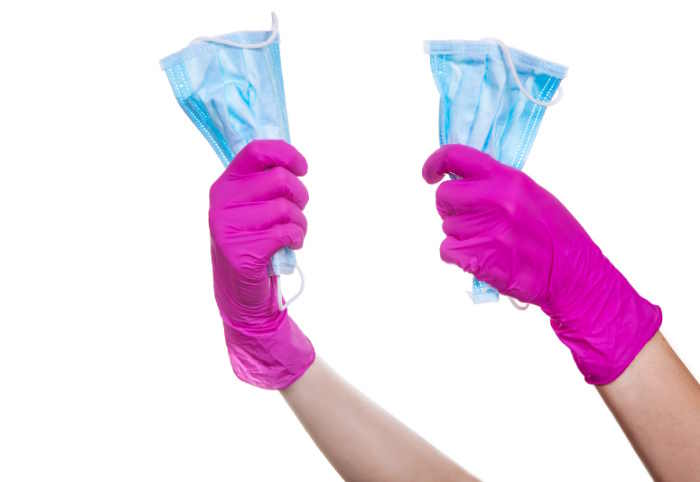
Caring for a dog suffering from Leptospirosis can be emotionally and physically challenging.
The chances of people catching Leptospirosis from their dog vary depending on factors such as the dog’s health status, the strain of Leptospira bacteria, and the human’s own susceptibility.
It is rare but possible, particularly in people with regular exposure to their dog’s urine, such as farmers, veterinarians, and kennel workers.
Consult with your doctor and veterinarian if you have any concerns. Here are some tips on how to care for yourself while caring for your dog:
- Follow your veterinarian’s treatment plan for your pet, which may include antibiotics, fluids, and other supportive care.
- Make sure to practice good hygiene by washing your hands frequently and avoiding contact with the dog’s urine.
- Wear gloves and protective clothing when handling the dog or cleaning up their urine.
- Keep the dog isolated from other pets and people to prevent the spread of the disease.
- Be aware that Leptospirosis is a zoonotic disease that can be transmitted from animals to humans. Therefore, it is vital to take precautions to avoid getting infected.
- Please consult with your veterinarian and follow their recommendations for treating and caring your dog.
- Take care of yourself emotionally and physically by getting enough sleep, eating well, and keeping yourself physically active.
Leptospirosis in Small Dogs
Author Bio
Nicole McCray
Nicole is a die-hard animal lover who has worked in pet care for years. She is a former vet technician, a dog mom to her two rescue pups, and she grew up living and working at her family’s pet boarding facility.
She loves using her writing talents to share the insight she’s learned throughout her career in the hopes that her knowledge can help other pet parents out there!
Leptospirosis in Small Dogs
Pin for Future Reference
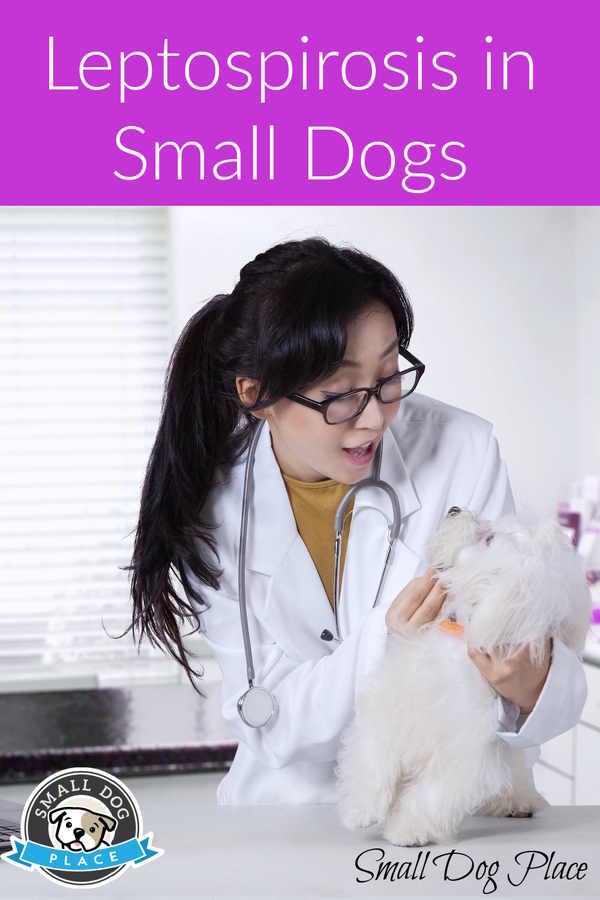 Leptospirosis in Small Dogs, Pin Image
Leptospirosis in Small Dogs, Pin ImageDoes This Article Deserve Your Thumbs Up?
We always appreciate your support and encouragement. Your thumbs up means so much to us. Please like this article.
If you find this page or any page on Small Dog Place Helpful, or Useful in anyway, I’d love it if you would click the small heart found on the bottom right of each page.
You can also share or bookmark this page — just click on the:
Your second block of text…

Free Monthly Newsletter
Sign Up for Our Free Newsletter and get our Free Gift to You.
my E-book, The Top 10 Mistakes People Make When Choosing a Dog (and how to avoid them)


